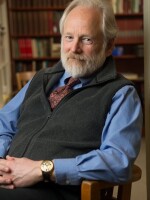“What do we mean by the American Revolution?” asked John Adams, “Do we mean the American war? The Revolution was effected before the war commenced.” Adams’s words indicate our fundamental problem with the American Revolution: because it began with Americans defining what they weren’t.
For more than a century American colonists had developed a habit of independence, if not the real thing, under inefficient imperial governance. They took their semi-autonomy for granted and assumed that that’s what it meant to be British. Hence, repeated attempts by Parliament to reassert control after 1763 convinced Americans that Britain was engaged in a revolutionary effort to oppress them. Colonists were simply trying to maintain the status quo. After escalating confrontations during the early 1770’s, Americans were ready for outright rebellion. If this is what it means to be British, they seemed to say, we aren’t.
Precisely what they were wasn’t terribly clear. And therein lies the uniqueness of the American Revolution. It was less a radical attempt to overthrow oppression than a somewhat conservative effort to preserve something others seemed to want to take away. But what was that thing?
In the broadest sense, it was the right to define ourselves. Alone among major nations, Americans define themselves as a people not because of common national origin or a common language, but by common allegiance to a set of ideas – of freedom, equality, equality of opportunity, of governments deriving their power from the governed - all proclaimed in the Declaration of Independence.
But ideas are one thing: putting them into action, living up to them – is quite another.
Historians debate when the American Revolution was completed. Adams said it was over before the war started. Some say it didn’t end until the Constitution framed a government implementing those ideals. Still others pinpoint the Election of 1800, when Americans demonstrated that power could be exchanged peacefully between opposing groups without toppling the government. But perhaps it wasn’t until the Civil War, which eliminated slavery – the great contradiction of the American experiment – and made it clear that the nation would not be broken. Or maybe it was even later, given that emancipation didn’t accomplish either full equality or equality of opportunity, and that people of color, women, and others still struggle to maintain a seat at the American table.
Today’s debates over the role of government in American life and our growing anxieties about rising economic and social inequality force us to confront again the age-old contradictions between the lofty ideals to which we give allegiance and the reality that so often seems to fall so short. But, in a way, that’s what the American Revolution was and is - a continuous argument through which we define what it means to be American.
We’re not celebrating something that’s over – we’re celebrating something that’s still happening. And we’re part of it.





